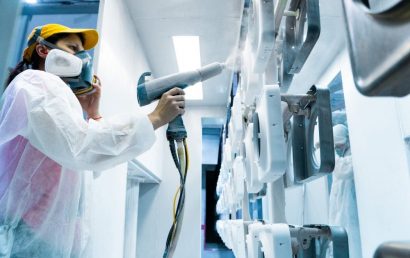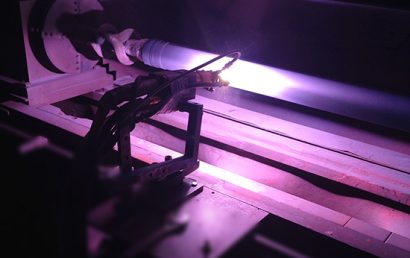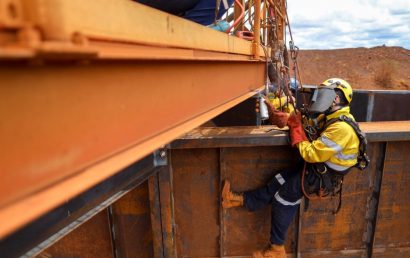Why Do People Specify A CVD Coating Thickness Range?
When spraying resistant coatings on refinery equipment, downhole sampling, sample cylinders, and more, rather than designating specific thicknesses, a CVD coating thickness range is used. Truth be told, a particular, very precise and exact thickness could be requested and achieved, but the cost would be phenomenal. Far better to go with a range appropriate for all things considered.
But first things first…
What Is The “CVD” In CVD Coating Thickness Range?
The letters CVD stand for chemical vapor deposition. This is a process typically executed under vacuum involving the injection of a volatile precursor into a chamber resulting in reaction. To a pre-determined reaction temperature, the chamber is heated to cause the precursor gas to break down or react into the coating desired. With the material surface in question, this coating bonds. Throughout the exposed surface of a part, this coating builds through repeated applications.
Ideally, to any exposed surface, the coating bonds externally and internally – top, sides, and bottom (underside).
Do not, however, confuse CVD with PVD (physical vapor deposition). In this coating method, a coating material is vaporized and then condensed or sprayed onto a surface. It is not chemical vapor deposition, but rather, a line of site application. With this coating method, however, the majority of the coating lies on the top and sides of the surface, whereas, the underneath parts do not receive any coating. It’s a little bit like a light snowfall on your patio furniture. Lots of snow on top – no snow underneath.
Coating Process Variations
Different coating processes and coatings themselves mean different coating thicknesses. The thickness of a coating relies on a lot of varying, contributing factors. The following are some examples:
- The surface of the part – Will the finished surface be extremely rough, or will very little surface roughness be allowed and more of a mirror finish required?
- The configuration of the part – Playing an essential part in coating thickness can be the available coating volume. Tighter, more confined, smaller areas may have less coating available for surface bonding.
- Surface condition and base material – Stainless steel alloys are frequently coated, but coatings can also be applied to exotic alloys like titanium, or ceramics, glass, paper, and more. Under certain conditions, the coating rate can be affected by the base material causing the coating thickness to vary. In certain areas where the base material surface is scratched, buffed, etched, heat stand, or oxidized, the thickness can vary as well.
- Rate of coating reaction – Most CVD reactions are driven by heat. The more heat that is applied, the harder the reaction is to stop precisely and quickly. It’s like driving a car at a high rate of speed. Try stopping on a dime and you’ll realize that a slower rate of speed may have been better. So what happens if the reaction can’t be stopped quickly? You may overshoot or exceed the target layer thickness with a fast reaction. Less thickness variation will result when the reaction is slowed. But not too slow because that will add to cost and processing time!
Different Coating Thicknesses and Functions
When a substrate is coated or covered, it can be for functional reasons, decorative reasons, or both. Coatings may cover only part of a substrate or all of it.
Being both decorative and used for protection are lacquers and paint coatings.
Coatings of a more functional use would be applied to change the substrate’s surface properties such as wear resistance, corrosion resistance, wettability, or adhesion.
Still other uses for coatings would be to add a completely new property to a substrate as in semiconductor device fabrication. An applied coating can add electrical conductivity, a magnetic response, etc.
Coating functions can include some of the following and more:
- Protective coatings
- Light-sensitive
- Catalytic
- Optical coatings
- Change adhesion properties (as in nonstick)
- Adhesive
- Decorative
- Scent properties
- Electronic or electrical properties
- Magnetic properties
Whatever kind of property you desire from a coating, and no matter what the specs are (the thickness of coating required), we’ve got you covered. Contact one of the knowledgeable representatives from A&A Coatings to discuss the many types of coatings available.



